Articles Menu
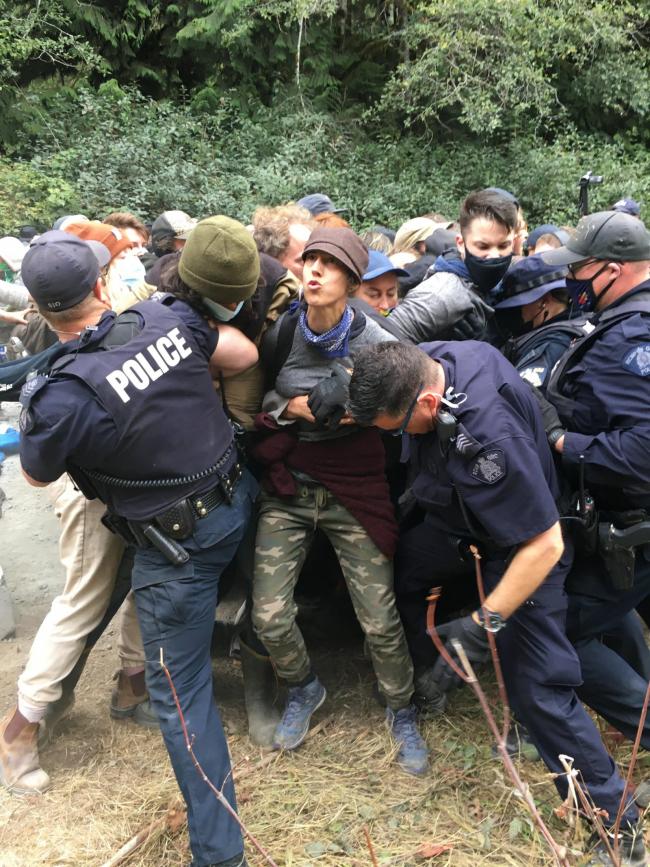
August 22nd 2021
Tall tree, deep water, strong wind, warm fire –
I can feel it in my body, I can feel it in my soul.
It is six a.m., just after dawn, and a crowd is already gathering at the Fairy Creek base camp, 50 feet from the main logging road into the old-growth forest. They are mostly young people, a mix of Indigenous and non-Indigenous. Kati George-Jim is one of the leaders, a member of the T'Sou-ke First Nation. Wearing a woven cedar hat, she speaks with authority, directing the group to form a tight group, arms linked, facing outward. There are a lot of directions about how to loosen up and spread out within the circle. Then approximately 70 ‘land defenders’ begin the walk to the main gate.
In position, the group begins to sing in rounds: Tall trees, deep water… I can feel it in my soul.
Standing apart with other witnesses, hearing their voices, I can’t help but be moved. These young activists blocking the road in an act of non-violent civil disobedience are apparently the only defence for the thousand-year-old trees in the Fairy Creek Forest. Biologists call it an irreplaceable ecosystem, home to almost extinct green lichen, endangered owls, bears, and marbled murrelets. As an old growth forest, it is also one of nature’s best ways to sequester carbon and off-set climate change.
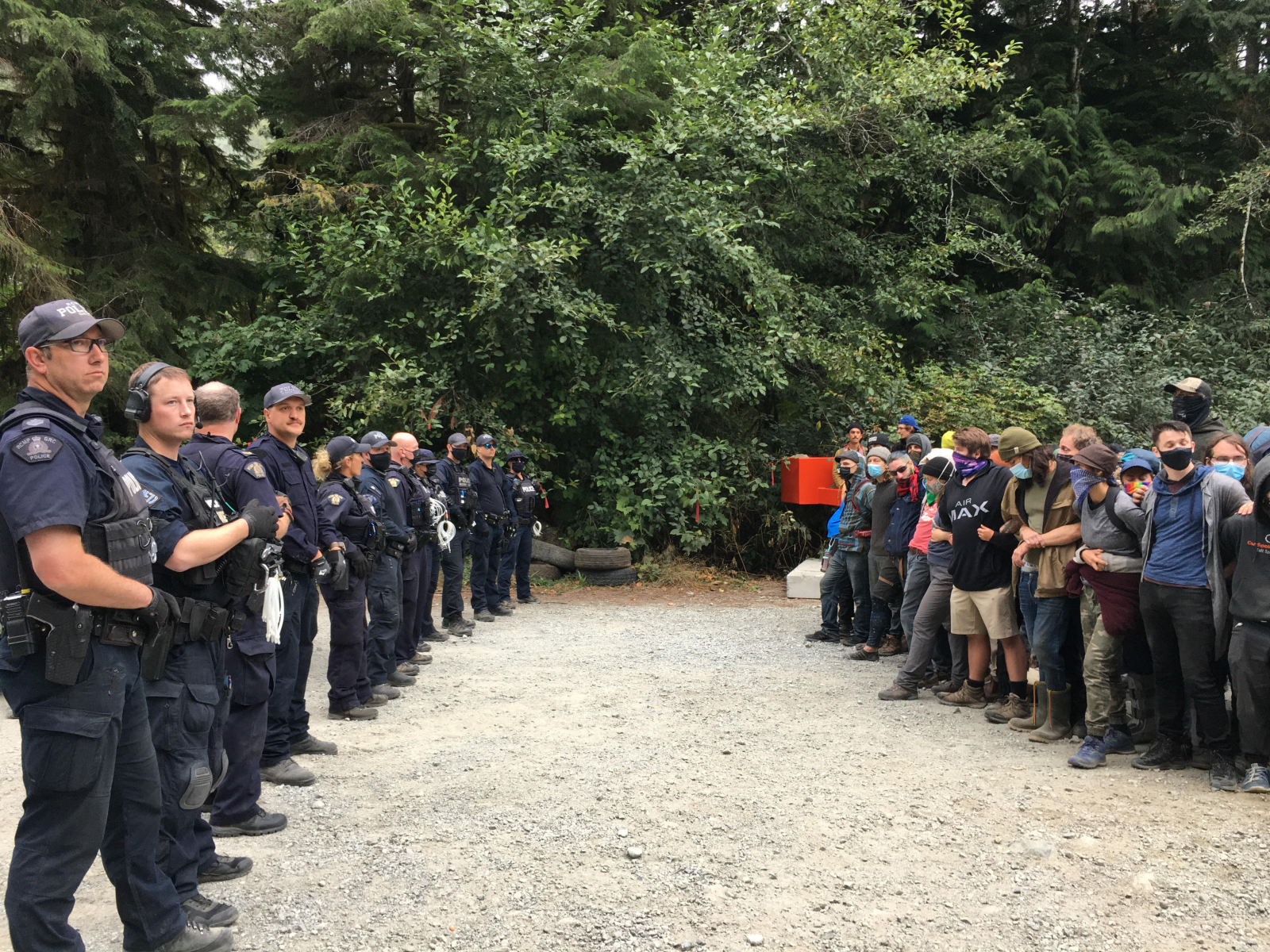
Suddenly an organizer in overalls leaps onto a cement block: “Who keeps us safe?” Embe calls out, and the crowd, clearly practiced, calls back: “We keep us safe!”
“My heart is singing,” Embe calls to the group, “because at the end of the day…we...we are cuter than them!” There’s laughter in the group.
Again I study their faces. They are pretty cute – there’s no denying. But powerful too. With traditional cedar hats, and many with rainbow scarves over mouths and noses (Covid precautions in the tight mass). I spot a man with his beard dyed blue, who goes by the name 'Ace'; and Dianne Cronmiller, a clinical counsellor from Victoria. Directly facing me is Malika Bindra, a soft-spoken 21-year-old. She told me earlier that she’s studying at Quest College in Squamish to become an elementary school teacher. Inspired by the old-growth forests of Meares Island, she wants to teach children about the wilderness.
“My mother is worried about me,” she said. “And she doesn’t even really know how brutal it can get out here.”
As if on cue, the RCMP trucks pull up, a flurry of slammed doors. As at least fifteen officers form a phalanx, facing the protesters, the singing is over and the mood feels adrenalin-soaked, militaristic. Officers tell me and other witnesses to move back. I move forward, citing the recent ruling from Judge Thompson (Teal Cedar Products v. Rainforest Flying Squad), which allows media access to witness protester actions and arrests and prohibits ‘undue and unnecessary police interference with journalist functions.’ My voice is shaking.
“You,” a black-masked RCMP officer shouts at me. “Can’t you listen to orders?”
I ask for his badge number, and he refuses to provide it.
As I ask for the media liaison officer, the masked officer comes closer. “What’s with you?” he speaks with contempt. “With your camera and your little notepad.” I reach for my media accreditation papers but another officer, differently dressed in soft browns, tells me that if I continue to fail to comply I will be under arrest.

Photo by Shaena Lambert of a police officer at Fairy Creek protest August 21, 2021.
I’m marshalled across the road, feeling badly shaken. They mean to intimidate me, and they have. I locate the police media liaison officer, Gilles Deziel, standing suavely with his arms crossed. He gives me a calm smile, assures me that ‘our obligation is to remove people safely.”
But that’s the opposite of what happens next.
A special Emergency Response Team (essentially a SWAT squad, Gilles Deziel explains) arrives. Working with remarkable speed these ‘Green Guys,’ as the activists call them, chain saw a stand of maple saplings, lay the trunks in the ditch to create a cord road, and drive their trucks through. In less than 10 minutes they’ve bypassed the protest group, gaining access to the road.
With this done, the RCMP circle the protesters and begin to push heavily against them. In their tight formation, the group can’t move. It’s clearly dangerous. Protesters call out reassurances (Who keeps us safe? We keep us safe!) while simultaneously shouting for the police to stop pushing. I see one protestor, a blond woman, plucked from the group and thrown onto the dirt road. Another is dragged along the gravel, her arms zip-locked behind her back and yanked upwards by the officer. I turn to the police media liaison.
“Is that safe removal?” I ask.
“No comment,” he responds.
It isn’t just the protesters at risk. In the melee, an RCMP officer falls backward into the ditch, landing on his back. He needs to be helped up by fellow officers. Then officers produce red cans of pepper spray, aiming directly at the clustered protestors. The protesters scream as it hits. Eyes watering, clutching their throats, they begin staggering across the road to safety. It’s an unbelievable display of force and violence. Friends rush for water. Medics gather.
A woman with pink hair is doubled over near me, eyes streaming. She gestures to the red spot on her throat where an officer jammed his elbow into her larynx. Another woman, camp name Arbutus, tells me she was strangled by an officer. A third woman is helped into a van by friends, weeping violently,her piercing ripped from her lip.
I locate Malika Bindra sitting on the side of the road. She gives me a shy smile as I ask if I can sit with her. I’m thinking about how she told me she wants to take children into the wilderness. Be a teacher. “What was it like for you?” I ask.
“My mask fell off, and I have asthma,” she says simply. “I couldn’t breathe.”
I ask about her worried mother – what would she say to all this. Malika nods, then answers:
“My mother always said to me, as a person of colour, just do what they (the RCMP) say. But I can’t. Not anymore. If I do, the forest will be cut down.”
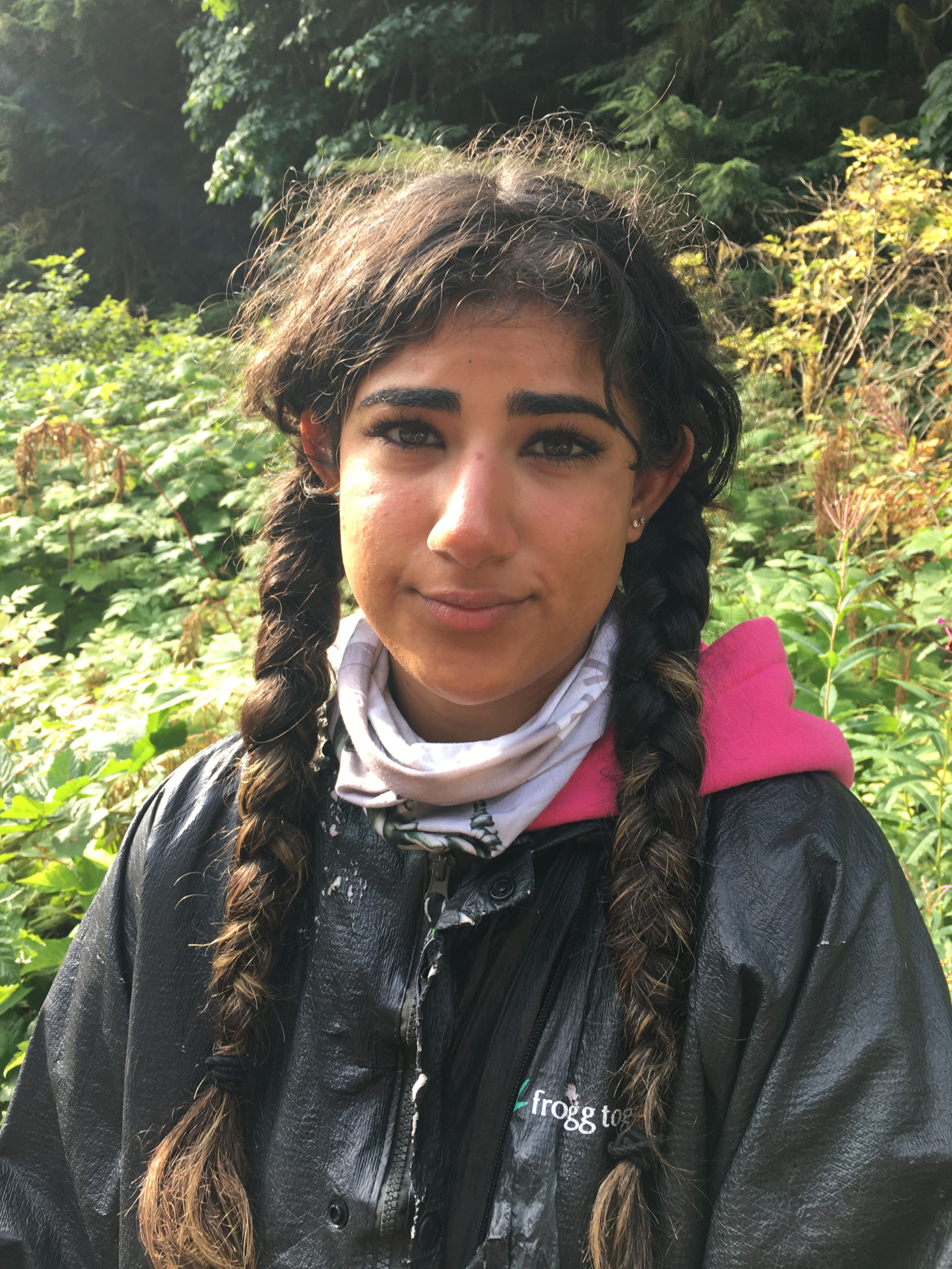
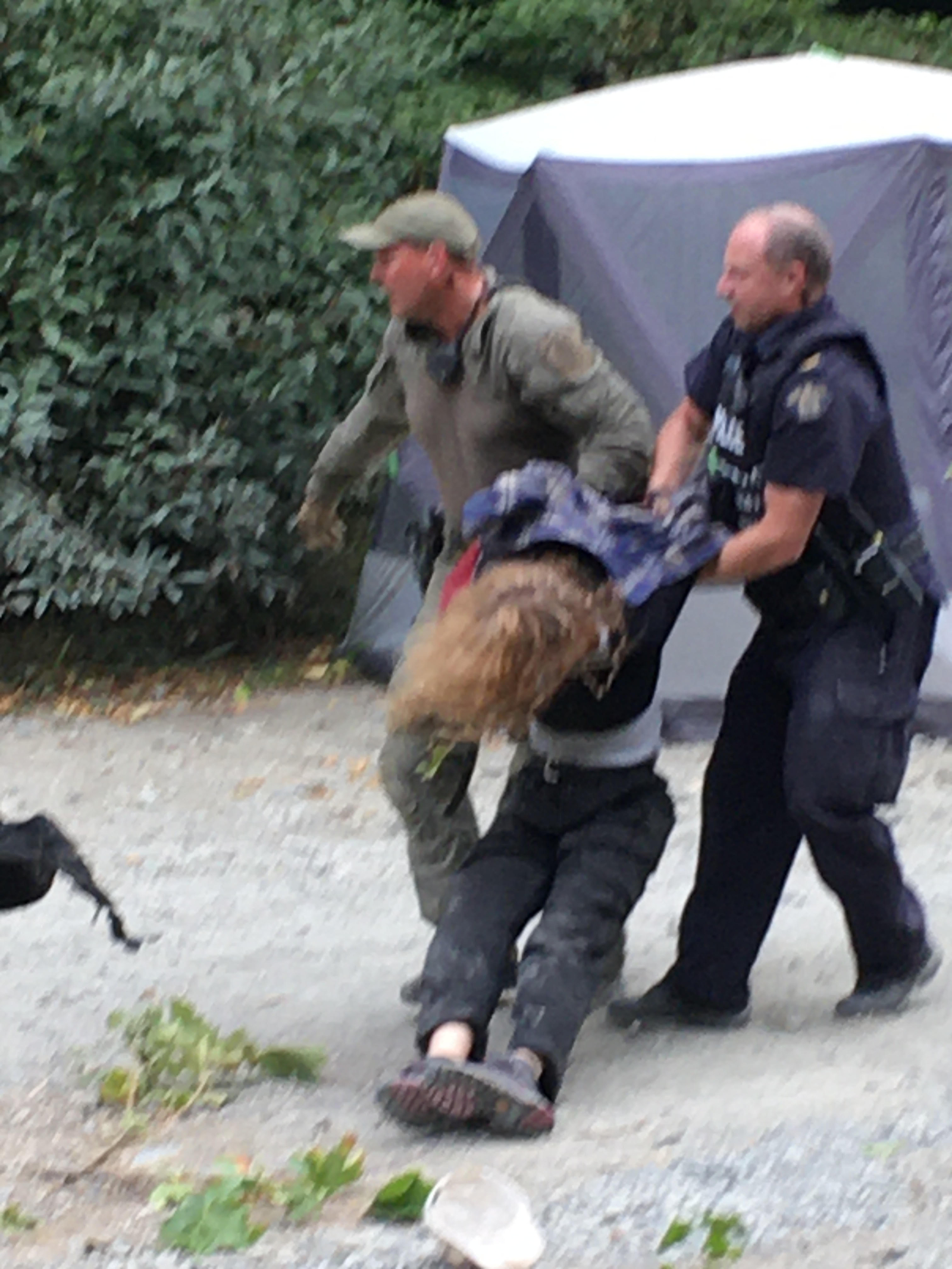
Police drag a person who was protesting the logging of old growth trees at Fairy Creek on August 21, 2021. Photo by Shaena Lambert
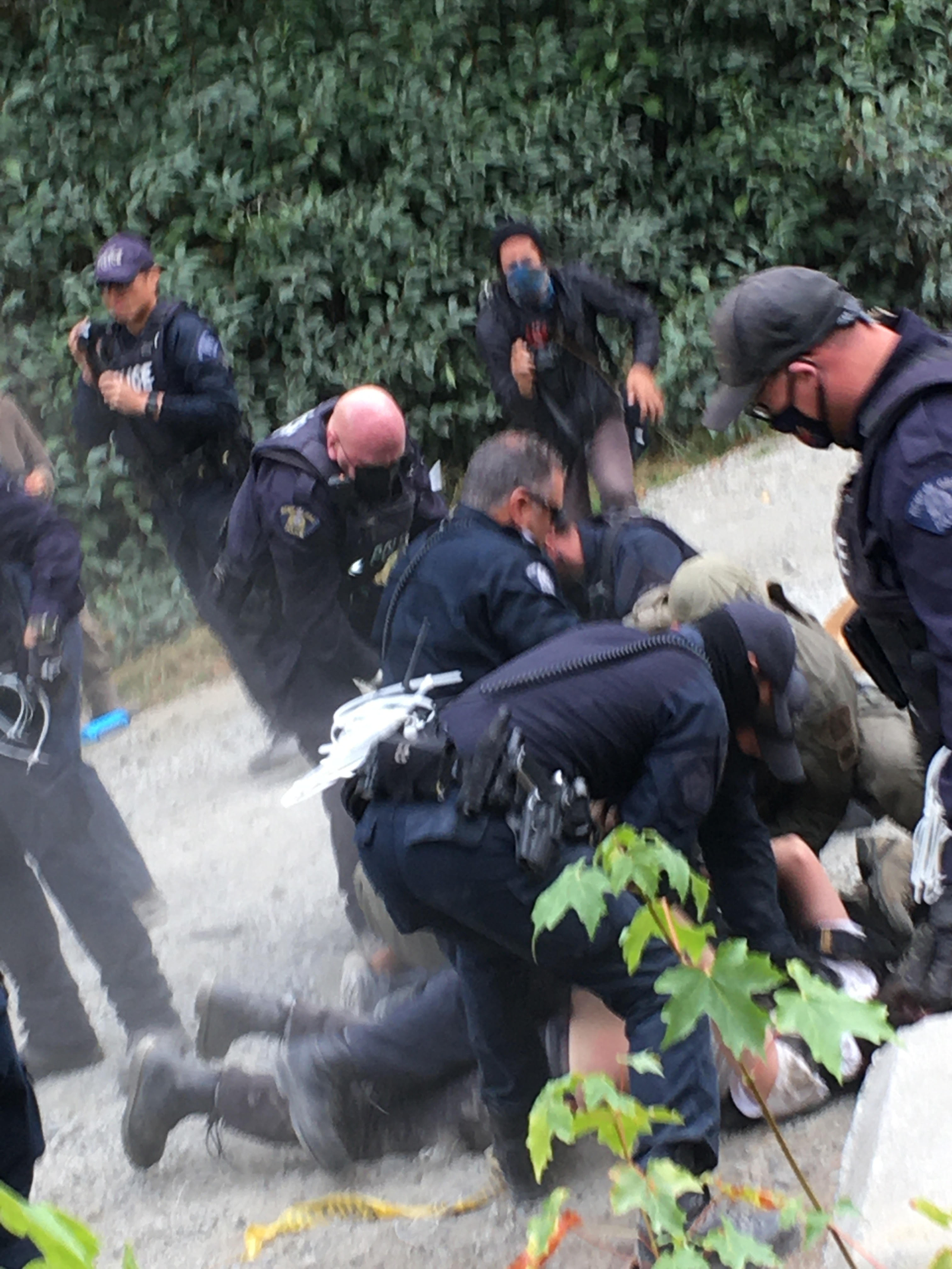
Police tackle protesters who were protesting the logging of old growth trees at Fairy Creek. August 21, 2021. Photo by Shaena Lambert
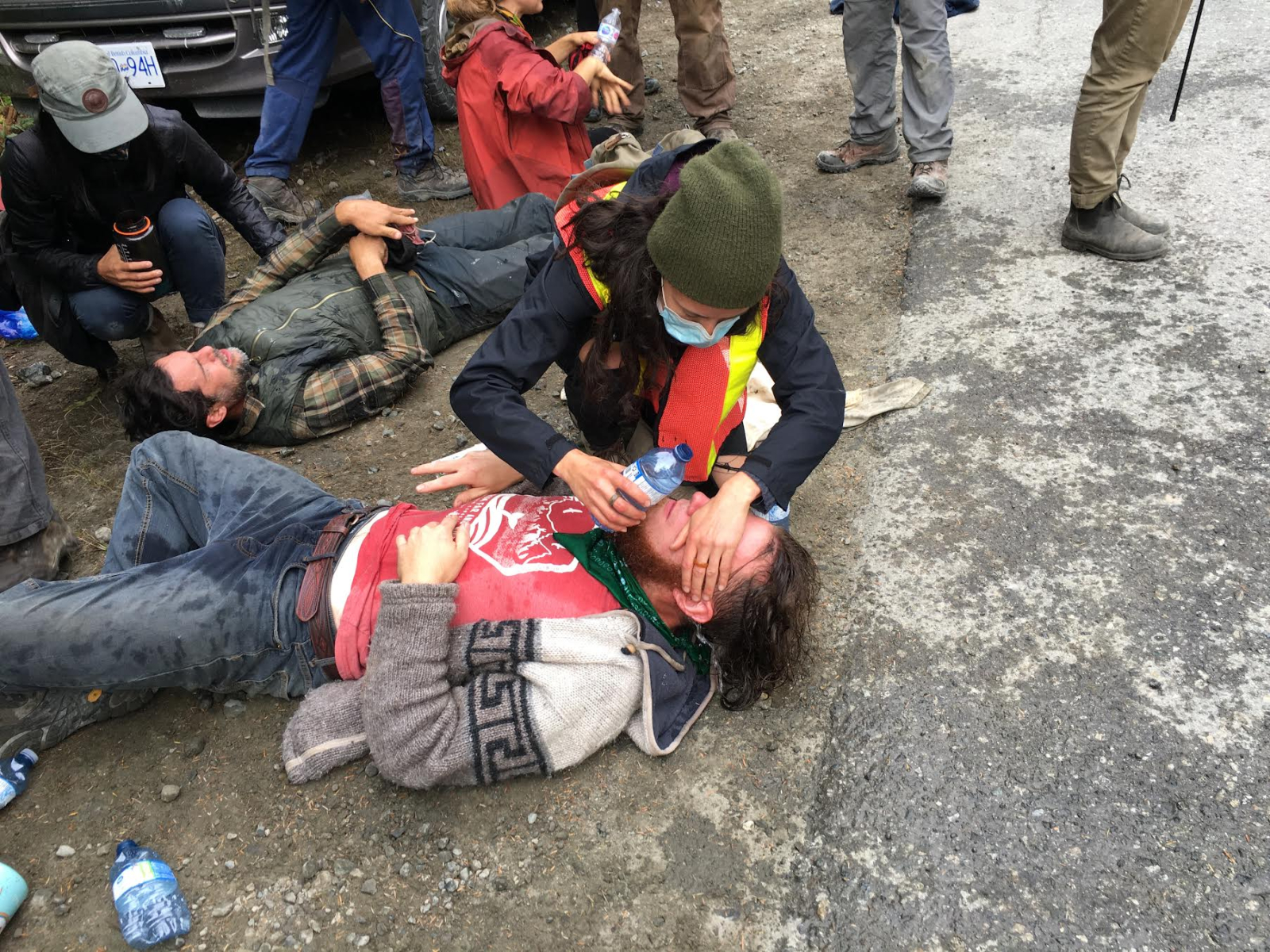

Group of young people protesting logging of old growth trees at Fairy Creek, August 21, 2021. Photo by Shaena Lambert
Shaena Lambert is reporting on Fairy Creek for Canada's National Observer. She is the award-winning author of the novels Petra and Radiance and the short story collections Oh, My Darling and The Falling Woman.
[Top photo: Protestors pushed and shoved violently as they form a civil disobedience cluster at Fairy Creek on August 21, 2021. Photo by Shaena Lambert]